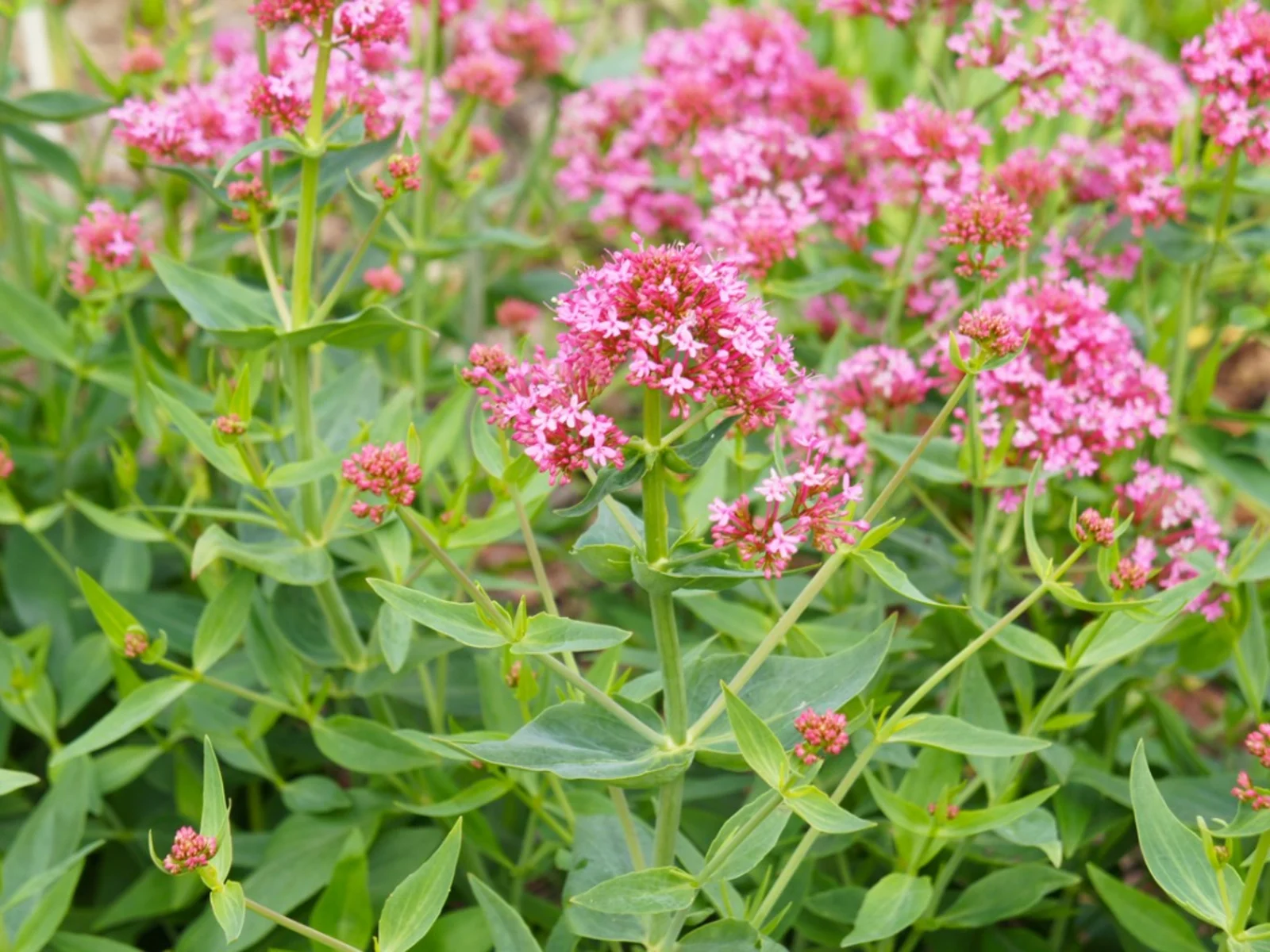
Red Valerian, also known by its scientific name Centranthus ruber, is a vibrant and eye-catching perennial plant that is sure to add a pop of color to any garden. With its showy clusters of red, pink, or white flowers, Red Valerian has become a beloved choice for both novice and experienced gardeners alike. But there’s more to this plant than meets the eye.
In this article, we’ll delve into 11 surprising facts about Red Valerian that will leave you amazed and inspired to incorporate this beautiful plant into your own outdoor space. From its historical uses as a medicinal herb to its ability to attract pollinators, Red Valerian has a rich and fascinating story to tell. So, let’s dive in and discover the hidden wonders of Red Valerian!
Key Takeaways:
- Red Valerian, despite its name, is not related to true valerian. It belongs to the Caprifoliaceae family and is native to the Mediterranean region, attracting butterflies, bees, and hummingbirds with its vibrant flowers.
- Red Valerian is a hardy perennial that can thrive in challenging environments, such as poor soil conditions and rocky areas. Its edible leaves and ability to attract beneficial insects make it a popular choice for gardens.
Red Valerian is not actually related to true valerian.
Despite its name, Red Valerian (Centranthus ruber) is not part of the true valerian (Valeriana) family. It belongs to the Caprifoliaceae family, which includes honeysuckles and snowberries. Although it shares some similar characteristics with true valerian plants, they are different species altogether.
Red Valerian is native to the Mediterranean region.
Red Valerian is indigenous to the Mediterranean region, specifically Southern Europe and parts of North Africa. It thrives in sunny and dry climates and is often found growing along cliffs, rocky slopes, and in open fields. Due to its adaptability, it has been introduced to various other regions around the world.
Red Valerian produces vibrant, long-lasting flowers.
The flowers of Red Valerian are known for their vibrant colors, including shades of pink, red, and white. These flowers form clusters at the ends of long, slender stems and have a delicate and sweet fragrance. Red Valerian is a prolific bloomer, with the flowers lasting from late spring to early fall.
Red Valerian attracts butterflies, bees, and hummingbirds.
Due to its brightly colored flowers and sweet fragrance, Red Valerian is a favorite among pollinators. It serves as an important source of nectar for butterflies, bees, and hummingbirds, making it a great addition to any pollinator garden. Its long blooming period ensures a constant supply of food for these beneficial creatures.
Red Valerian has been used in traditional medicine.
The roots of Red Valerian have been used in traditional medicine to treat various ailments. It has been traditionally used as a diuretic, sedative, and to alleviate digestive issues. However, it is important to note that the medicinal uses of Red Valerian have not been extensively studied or scientifically proven.
Red Valerian is a hardy perennial.
Red Valerian is a hardy perennial plant, meaning it can survive and thrive for multiple years under the right conditions. It has a high tolerance for drought and can withstand various soil types, making it a low-maintenance choice for gardeners. Once established, it can self-seed and spread easily.
Red Valerian can grow in challenging environments.
One of the remarkable features of Red Valerian is its ability to flourish in challenging environments. It can thrive in poor soil conditions, such as rocky or sandy soils, and is often found growing in urban areas, along roadways, and in abandoned fields. Its adaptability makes it a resilient and versatile plant.
The leaves of Red Valerian are edible.
While the flowers are the most prized part of Red Valerian, the young leaves are also edible and can be used in salads or as a garnish. The leaves have a slightly bitter taste and can add a unique flavor to culinary dishes. However, as with consuming any plant, it is important to ensure they are from a safe and pesticide-free source.
Red Valerian is a popular choice in rock gardens.
With its ability to grow in rocky and challenging environments, Red Valerian is a popular plant choice for rock gardens. Its clusters of colorful flowers create a beautiful display against the rugged backdrop of rocks and give a natural, wildflower-like feel to the garden.
Red Valerian has naturalized in various regions around the world.
Due to its adaptability and attractive nature, Red Valerian has escaped cultivation and has become naturalized in many regions outside its native range. It can now be found in parts of North America, Australia, New Zealand, and various other countries. Its ability to thrive in different climates has allowed it to establish itself as an invasive species in some areas.
Red Valerian is a popular choice for attracting beneficial insects.
Gardeners often choose Red Valerian to create a pollinator-friendly habitat in their gardens. It not only attracts butterflies, bees, and hummingbirds but also serves as a host plant for the caterpillars of certain butterfly species. By planting Red Valerian, you can support the local ecosystem while enjoying its striking beauty.
Conclusion
In conclusion, Red Valerian is a fascinating and versatile plant that offers a multitude of benefits. Its vibrant red flowers, sweet fragrance, and ability to attract various pollinators make it an excellent choice for garden enthusiasts. Additionally, Red Valerian’s medicinal properties and its ability to thrive in diverse environmental conditions make it a valuable asset for herbalists and naturopaths.
Whether you’re looking to add a pop of color to your garden, support local wildlife, or explore the healing properties of plants, Red Valerian is a fantastic option to consider. With its surprising and unique attributes, this plant is sure to captivate and delight anyone who encounters it.
FAQs
1. Is Red Valerian easy to grow?
Yes, Red Valerian is a relatively low-maintenance plant that is easy to grow. It can thrive in a variety of soil conditions and is tolerant of drought and heat.
2. Does Red Valerian attract pollinators?
Absolutely! Red Valerian is known to attract butterflies, bees, and other pollinators with its vibrant flowers and sweet fragrance.
3. Can Red Valerian be used for medicinal purposes?
Yes, Red Valerian has been used for centuries in herbal medicine. It has properties that can help with relaxation, anxiety, and sleep disorders.
4. How tall does Red Valerian grow?
Red Valerian can grow up to three feet in height, making it a great addition for borders and rock gardens.
5. Can Red Valerian survive in cold climates?
While Red Valerian prefers warmer climates, it is known to tolerate cold temperatures and can survive in colder regions with proper care.
Red Valerian's captivating qualities make this plant a must-have for any garden enthusiast. Beyond its vibrant flowers and hardy nature, there's still more to explore about this fascinating species. Unraveling the surprising origins of Red Valerian will deepen your appreciation for its unique characteristics. So, if you're ready to expand your knowledge and fall even more in love with this charming plant, keep reading to satisfy your curiosity.
Was this page helpful?
Our commitment to delivering trustworthy and engaging content is at the heart of what we do. Each fact on our site is contributed by real users like you, bringing a wealth of diverse insights and information. To ensure the highest standards of accuracy and reliability, our dedicated editors meticulously review each submission. This process guarantees that the facts we share are not only fascinating but also credible. Trust in our commitment to quality and authenticity as you explore and learn with us.


